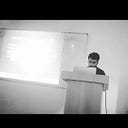Biological Computing: Unlocking Nature’s Potential for Advanced Information Processing
In the quest for powerful computing systems, scientists have turned to the natural world for inspiration. Biological computing, also known as biocomputing, harnesses the remarkable capabilities of living organisms and biological processes to perform complex computations and information-processing tasks. By leveraging the inherent parallelism, adaptability, and energy efficiency of biological systems, researchers are exploring the potential of biological computing to revolutionize various fields, from healthcare and environmental monitoring to data storage and molecular design. This article delves into the fascinating realm of biological computing, exploring its principles, applications, and future prospects.
Principles of Biological Computing:
- DNA Computing: DNA, the molecule responsible for storing genetic information, can also be utilized for computing purposes. DNA computing harnesses the immense storage capacity and parallel processing capabilities of DNA molecules to perform computations. By encoding information in DNA sequences and utilizing enzymatic reactions, DNA-based algorithms can solve complex problems in parallel.
- Cellular Computing: Cells, the fundamental units of life, possess inherent computational capabilities. Cellular computing involves harnessing the properties of cells to perform computations. Cellular automata and genetic regulatory networks are examples of cellular computing systems, where cells interact and communicate to process information and perform tasks.
- Biochemical Reactions and Networks: Biological systems rely on intricate networks of biochemical reactions to carry out complex functions. These reactions can be harnessed for computation by utilizing enzymes, proteins, and chemical reactions as computational elements. Researchers can create computational systems that execute specific algorithms by engineering biochemical networks.
Applications of Biological Computing:
- Biomedical Applications: Biological computing has promising applications in healthcare and medicine. DNA computing can be utilized for disease diagnosis, drug discovery, and personalized medicine. Cellular computing can aid in understanding biological processes and modeling diseases, leading to advancements in precision medicine and therapeutics.
- Environmental Monitoring: Biological computing can contribute to environmental monitoring and conservation efforts. Biochemical reactions and microbial computing systems can be used to detect and analyze environmental pollutants, monitor ecosystem health, and assess water quality. These applications provide valuable insights for sustainable resource management.
- Data Storage and Processing: DNA-based data storage has garnered significant attention due to its immense information storage capacity. Biological computing can provide efficient and secure methods for data storage, processing, and retrieval. DNA molecules can store vast amounts of information in a compact and durable format, offering potential solutions for long-term data archiving.
- Molecular Design and Optimization: Biological computing can facilitate the design and optimization of molecules with specific properties. By utilizing computational techniques based on biological principles, researchers can accelerate the discovery and development of new materials, drugs, and catalysts.
Biological computing involves complex biological processes and systems that are challenging to demonstrate through code. However, I can provide a simplified example that showcases DNA computing using Python. In this demonstration, we’ll perform a basic DNA sequence matching algorithm.
def dna_sequence_matching(sequence, target):
# Convert the DNA sequence and target to uppercase
sequence = sequence.upper()
target = target.upper()
# Check if the target sequence is present in the DNA sequence
if target in sequence:
return True
else:
return False
# Define the DNA sequence
dna_sequence = "ACGTAGCTAGCTGACGTCGATCGATCGATGCGT"
# Define the target sequence
target_sequence = "GATCG"
# Perform DNA sequence matching
result = dna_sequence_matching(dna_sequence, target_sequence)
# Print the result
if result:
print("Target sequence found in the DNA sequence.")
else:
print("Target sequence not found in the DNA sequence.")O/p:
In this demonstration, we have a DNA sequence represented by the variable dna_sequence and a target sequence represented by the variable target_sequence. The dna_sequence_matching function takes both sequences as inputs and checks if the target sequence is present in the DNA sequence. If the target sequence is found, it returns True; otherwise, it returns False.
In this example, the target sequence “GATCG” is present in the DNA sequence “ACGTAGCTAGCTGACGTCGATCGATCGATGCGT”. Therefore, the output indicates that the target sequence is found in the DNA sequence.
Note: that this example is a simplified representation of DNA computing, and real-world biological computing involves much more complex processes and algorithms.
Future Prospects and Challenges: The field of biological computing is still in its nascent stages, and numerous challenges lie ahead. Some key challenges include:
- Scalability and Complexity: Scaling up biological computing systems to handle complex computations remains a challenge. Developing techniques to manage and control the intricacies of biological systems is crucial for expanding the capabilities of biological computing.
- Integration with Traditional Computing: Integrating biological computing with traditional computing technologies poses challenges in terms of compatibility, communication, and hybrid system design. Overcoming these challenges will be essential for harnessing the combined power of biological and conventional computing systems.
- Ethical and Regulatory Considerations: As biological computing advances, ethical and regulatory frameworks must be developed to ensure responsible and safe practices. Addressing concerns related to privacy, security, and potential misuse of biological computing technologies is essential.
To conclude, Biological computing presents a fascinating frontier in the realm of information processing, leveraging the power of living systems to perform advanced computations. With its potential applications in healthcare, environmental monitoring, data storage, and molecular design, biological computing offers a unique approach to solving complex problems. As research progresses and challenges are overcome, the integration of biological and conventional computing systems holds the promise of ushering in a new era of efficient, sustainable, and powerful information processing technologies.
